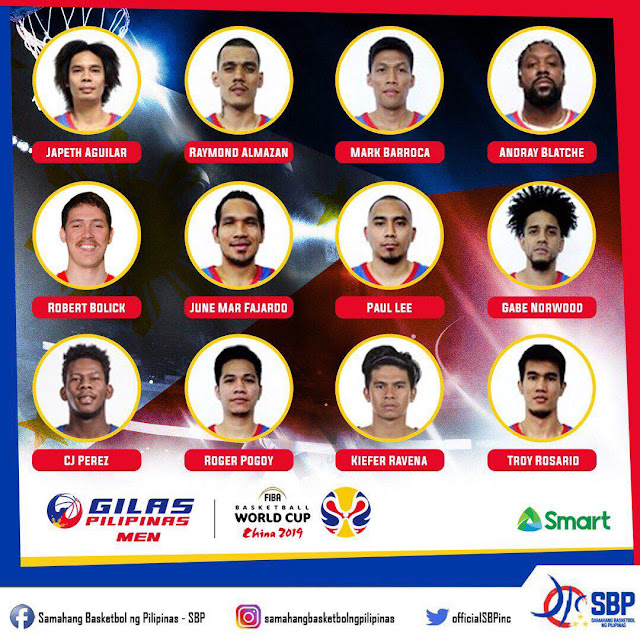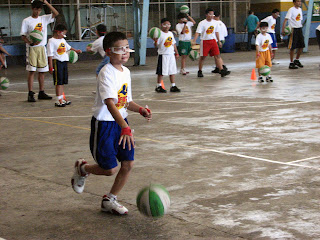FIBA World Cup
When the FIBA World Cup kicks off on Saturday, the whole basketball world sets its eyes on China as it hosts the biggest every World Cup edition in terms of size and depth. Note that the Philippines lost its bid to host this year’s World Cup, but that’s fine; a blessing in disguise as we’re more set to host it in 2023. The world’s top 32 teams converge on China and this includes our very own Gilas Pilipinas which is making its second straight trip to the event after playing in the 2014 edition in Spain.
The biggest story of the event so far is the obvious no-show of the sport’s biggest stars. There will be Lebron James, Steph Curry, Russell Westbrook, James Harden, Paul George, et. al. for the USA. This early, a few are already predicting that this could be one of the US’s weakest teams in history. I beg to disagree since it’s still stacked with legitimate NBA-level talent and is composed of a nice mix of second-tier/level stars who tend to work together as a team more, something that is difficult to achieve with a team of super-superstars. They have proven this in their tune-up games against Spain and Australia. They also play Canada later in the week. The U.S. is still the favorite to win it all and the battle will be for who they face in the finals. If we take a look at the top ten of the FIBA world rankings, the teams expected to crowd the U.S. for the gold are Spain, France, Serbia, Argentina, Lithuania, Slovenia, Greece, Croatia and Russia. Australia, Brazil and Italy round up the top thirteen. I had to include Italy there since Gilas Pilipinas has the “honor” of facing Serbia and Italy in group play. Gilas is ranked 32nd while Angola is #39, but that’s not a guaranty that we will win over Angola in Fosha, is it? It will be interesting if we can duplicate our 2014 feat or level up a bit.
Even if the top stars of the NBA aren’t around, fans will
have the chance to see the NBA’s MVP in Giannis Antetokounmpo who’ll play for
Greece. Kemba Walker and Donovan Mitchell lead America’s stars of quick and
athletic stars who were handpicked by Greg Popovich for their adaptability to
the international style of play. All other top teams will have a mix of NBA
veterans and pros from the Europeans leagues. For our group, it will be
interesting to see how we match up against Serbia’s Nikola Jocic, Bogdan
Bogdanovic and Milos Teodosic. In Italy, how will we fare against Marco Bellinelli
and Danilo Gallinari? Angola is the most unknown among our group but their key
players ply their trade in Europe and that says a lot about their talent
level.
Among the interesting things that I’d like to see is how
many fans from around the world will make the trip to China in basketball’s
contribution to sports tourism. Will those European fans follow their favorite
players in the same way that they do for football? Will they stay in China for
all of the two weeks (August 30 to September 15)? And which teams will have the
most fans? I’m pretty sure that the U.S. will draw a lot of attention from the
Chinese basketball fans and those from other countries. That’s practically a
given already. I’m even second-guessing if diehard basketball fans from the
U.S. will make the trip to China to watch Team USA (outside of the team’s
families).
Gilas Pilipinas will surely draw the OFWs from Foshan and nearby Guangzhou but can they outnumber the fans of the other teams in the group? I sure hope so. And will Pinoys from the Philippines travel to Foshan to watch Gilas Pilipinas play? It takes only two hours by plane from Manila to Guanghzou and around 45 minutes by car from Guangzhou to Foshan, thanks to google maps. In fact, there are flights from Cebu to Guangzhou (2 hours and 45 minutes). Just ask Batang Gilas manager Andrew Teh and he can hook you up to watch the games at competitive rates.
Another thing to look out for is if the switch to 2019 and
not compete with the 2018 FIFA World Cup’s four-year cycle will have a better
impact on ticket sales, TV ratings, sponsorship packages and over-all business.
One week na lang before basketball’s biggest halo-halo of a
showcase for the sport. Can’t wait. See you.




Comments